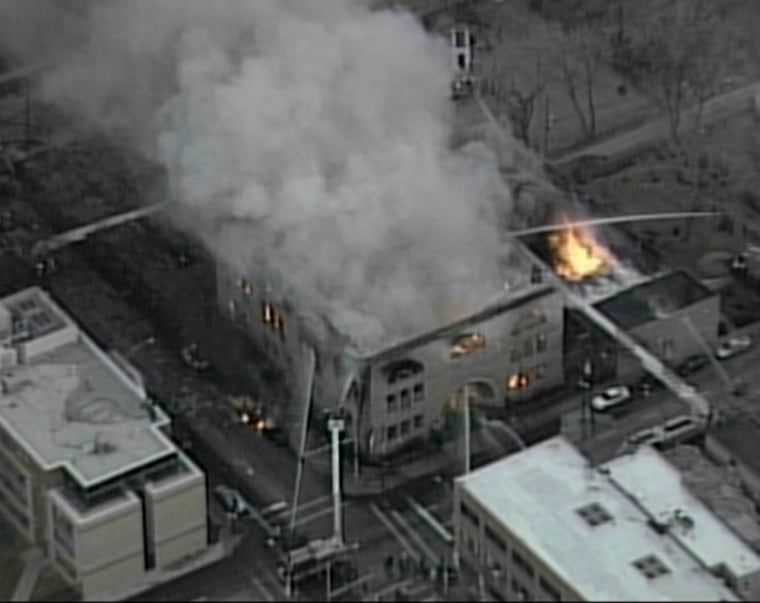A massive fire Friday destroyed a landmark South Side church where Mahalia Jackson and other gospel royalty often sang during the 20th century and the man considered the father of gospel music led the choir.
The fire gutted Pilgrim Baptist Church, collapsing its roof and steeple. No major injuries were reported, and the cause of the fire was not immediately known, though repair work had been under way on the roof, fire officials said.
“It is a great loss,” said the Rev. Hycel B. Taylor, the church’s former pastor. “It was the center of spiritual life for the community for so long.”
The church, built in 1890 as a synagogue and converted to a Christian church in the 1920s, was designed by the famous architectural firm headed by Louis Sullivan and his partner.
It was here that Thomas A. Dorsey perfected his cross of the raw soulfulness of the blues with the sacred music of his youth into a sound that became gospel music.
Dorsey, considered the “father of gospel music,” was Pilgrim’s music director from 1932 until the late 1970s while he wrote for some of the premier gospel voices of the time. His all-time greatest hit, “Take My Hand, Precious Lord,” was popularized by Mahalia Jackson and became a favorite of the Rev. Martin Luther King Jr.
Over the decades, a series of gospel stars performed at Pilgrim, including Sallie Martin, James Cleveland and the Edwin Hawkins Singers. The funeral service for early 20th century boxing champion Jack Johnson was also held at the church, Taylor said.
The congregation now numbers about 300, but in its heyday in the 1940s it had about 10,000 members, Taylor said.
It had been “the quintessential black megachurch,” he said.
The fire likely destroyed its archives, including old photographs and Dorsey’s original sheet music, Taylor said.
“It’s like hearing a close relative has died or a good friend. It’s heartbreaking,” said Ned Cramer, curator of the Chicago Architecture Foundation.
Architecturally, the building was a place where Sullivan and Dankmar Adler experimented with the features that made them famous: vaulted ceilings, acoustics and ornamental designs, such as terra cotta panels with intricate foliage designs. Adler’s father was the rabbi there, Cramer said.
“For Chicago to lose a landmark like this is irreplaceable,” he said. “It’s devastating.”
